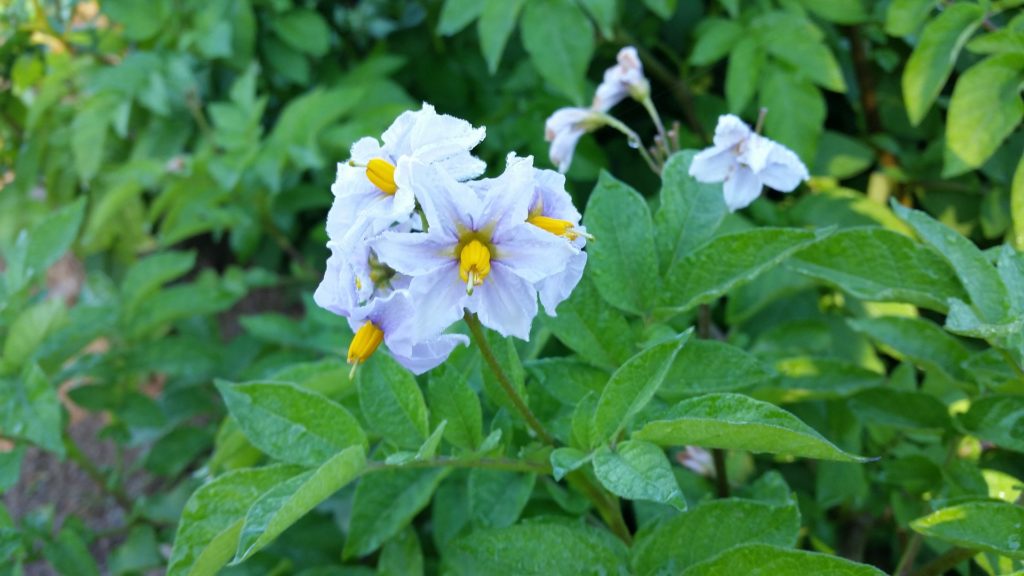Growing potatoes is an exciting adventure for a survivalist gardener.
First, you see those tinyyyyyy little sprouts breaking free from the mother tuber.
Then, you watch as your tiny plants are put out on their own, to face the great outdoors in their new home (the garden bed).
As they adjust, you watch them grow up, into big, healthy potato plants that you proudly show off to your friends and family.
Then, it happens: your beautiful, mature plants set forth beautiful, small flowers.
With their willingness to reproduce evident, you know that tuber production is in full force.
But… When to stop watering potatoes in preparation for harvest? How will you know when enough is enough?!
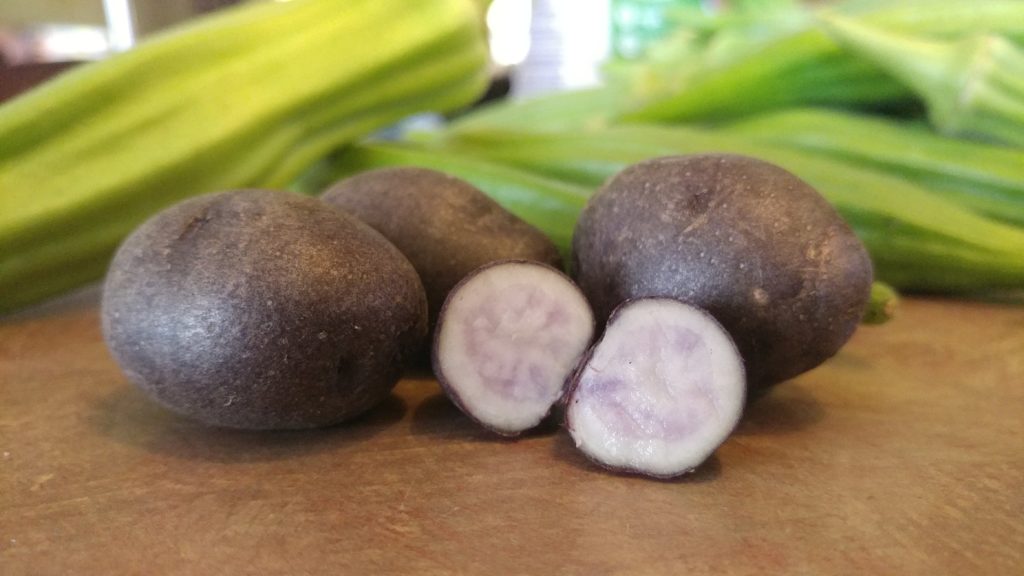
The Importance of Dry Potatoes at the End of the Growing Season
As the potato season begins to come to a close and you’re preparing to harvest, you’re going to want to plan for a dry harvest. You do not want the earth, or the potatoes, wet when you begin to dig them or pull them up.
Once tuber production slows, water is not quite as important as the plant is preparing to die, anyways. By eliminating the water at the right time, you will do no harm to your potatoes. As a matter of fact, you are helping to prevent the onset of any fungal infections that might require very moist soil in order to infect your potato plants and your nearly mature tubers. If you are growing your tubers in raised beds, your potatoes will dry out faster; so keep this in mind.
The most important reason for keeping tubers dry at harvest is to make harvest easier, while reducing the risk of injury and infection while unearthing the tubers. Wet soil can be harder to dig in, and it sticks to the potatoes more readily. Dry soil breaks apart easily, falls away from the potato, and it is easier to see the potatoes that are hiding as the soil tumbles away from them. This prevents potential injuries, which would prevent a potato from storing well.
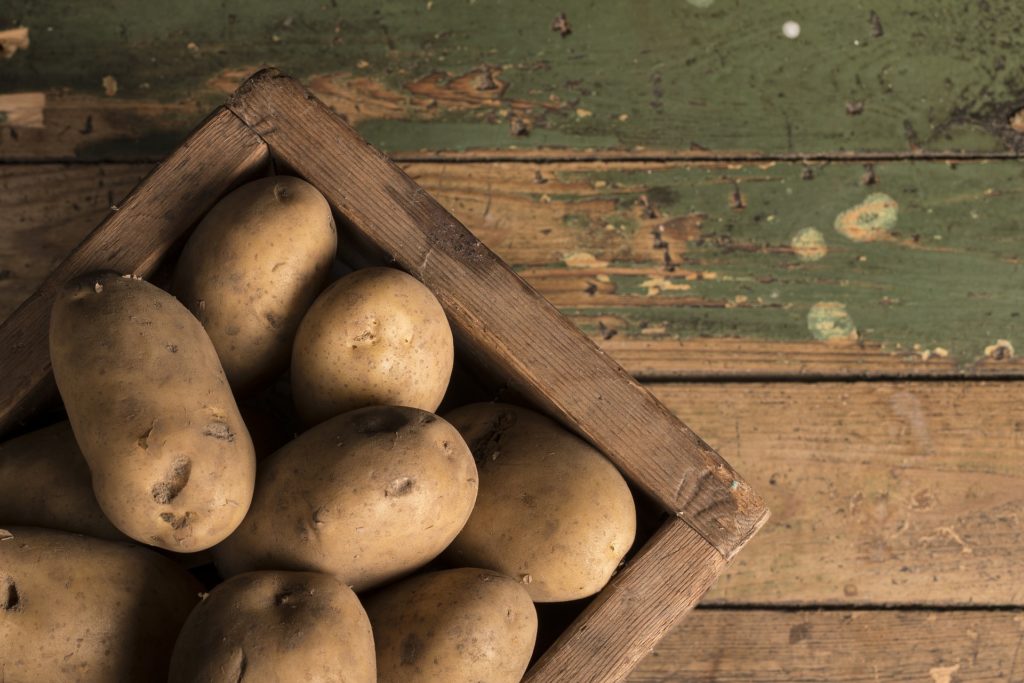
When to Stop Watering Potatoes for Harvesting
Now that we know why drying the potatoes out is important, let’s talk about when to stop watering the potatoes! First, you want to make sure that your potatoes are finished building their energy stores within the tubers.
Tuber formation begins while the plant is very small. As it grows, new tubers will be added on stolons, until the plant begins to flower. Flowering allows the plant to reproduce and propagate itself via seed, which means that the plant has matured to its full size. Once the flowers begin to die back, the little tubers underground begin to really pack on the weight. These tubers continue to grow until the plant begins to yellow; they are a backup option for the plant, allowing itself to return the following year if the seeds fail to take hold. 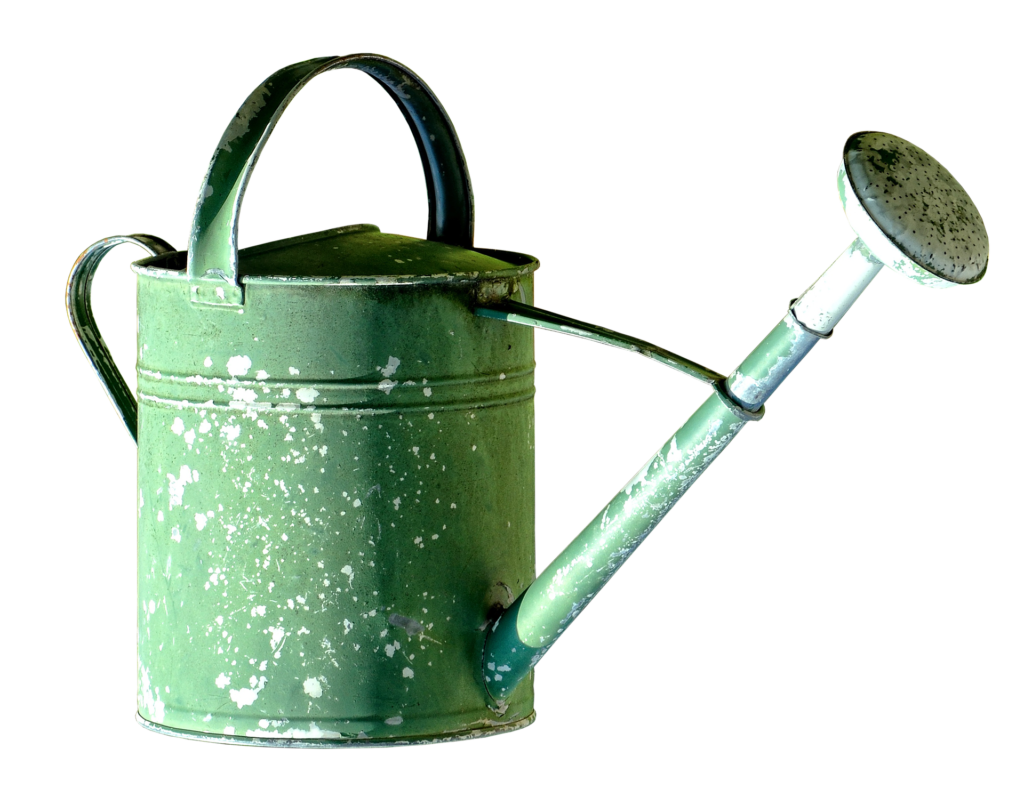
Once your plants begin to yellow after flowering, you can begin to withhold water. Indeterminate potato plants act a bit differently with flowering, so check them out; you want to make sure the plant is dying back on its own. Allow the plants to die down, and when more than 75% of the plant is yellow, go ahead and cut the plant down. Allow the tubers to dry for 14 more days after the plant has been cut, giving the newly formed potatoes a chance to develop thick, tough skins that will help them to last when stored.
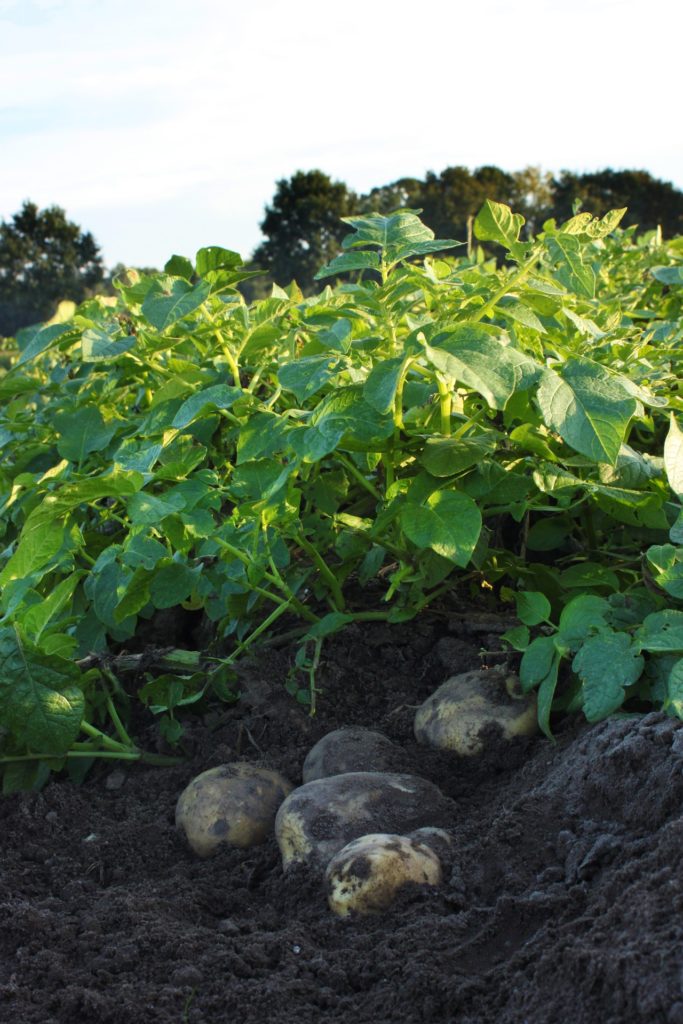
Can Watering Stop While Plants Are Still In Flower?
Do not stop watering your potato plants during the flowering stage. This could cause a very poor potato harvest, so it is important to time your watering cessation properly. As a matter of fact, if you are growing your potatoes in above ground or raised set ups like these, you need to increase your watering to ensure your plants give you a decent harvest.
Between the onset of flowering and plant die-back, the potato tubers will be in their most rapid stage of growth; this is when the plant is at its largest, processing the most energy from its foliage and storing it for later. Since water is a main component of the potato tuber, water is more vital than ever at this stage.
